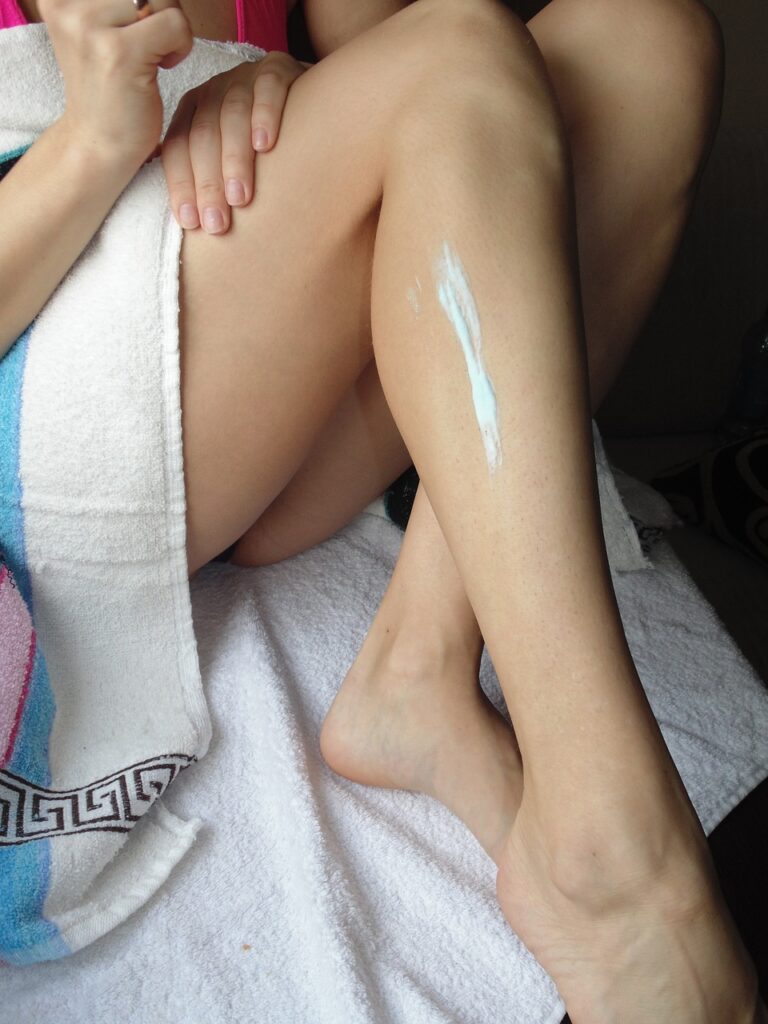Are you tired of the constant battle against unwanted hair? Say goodbye to razors, waxing, and incessant hair pulling, and discover the wonders of laser treatment for permanent hair removal.
In this comprehensive article, we’ll dive into the world of laser technology and explore how it works to remove those annoying hairs once and for all. From understanding the different types of lasers used to how effective they are on different skin and hair types, we won’t leave any stone unturned.
We’ll also give you invaluable tips and precautions to take to help you get the best possible results from your laser hair removal treatments. So, if you’re ready to say goodbye to the never-ending hair removal routine and embrace a smoother, hair-free future, keep reading to find out everything you need to know about laser treatment for permanent hair removal.

How does laser treatment for permanent hair removal work?
Laser treatment for permanent hair removal works by selectively targeting hair follicles using an intense beam of light. The laser emits a specific wavelength that is absorbed by the melanin present in the hair. This light absorption generates heat, which damages the cells responsible for hair growth. Over time and over several treatment sessions, the hair follicles are gradually destroyed, resulting in a permanent reduction in hair regrowth.
It is important to note that laser treatment is most effective on dark hair and light skin, as melanin absorbs light better. Light, gray, or red hair can be more difficult to treat with the laser, as it has less melanin. However, with the advancement of laser technology, there are now lasers that are specifically designed to target light or dark hair, providing options that are more suitable for different hair and skin types.
Laser treatment can be performed on different parts of the body, including the face, arms, legs, back, and bikini area. It is important to consult with a qualified professional before undergoing laser treatment to determine if you are a good candidate and to discuss realistic expectations for results.
Different Types of Lasers Used for Permanent Hair Removal
There are several types of lasers used for permanent hair removal. Each type of laser uses a specific wavelength that targets melanin in the hair. Here are the most commonly used types of lasers:
- Diode laser: This type of laser emits a wavelength of infrared light that is absorbed by the melanin in the hair. It is effective for dark hair and light skin. The diode laser also offers faster processing due to its large processing surface.
- Nd:YAG Laser: This laser emits a longer wavelength that penetrates deep into the skin. It is ideal for dark hair on darker skin tones, as it limits the risk of burns or skin damage.
- Alexandrite Laser: This laser emits a shorter wavelength that effectively targets dark hair. It is often used on light to medium skin tones and offers quick results.
Each type of laser has its advantages and limitations, so it is essential to consult with a qualified professional to determine which type of laser is best for your skin and hair.
Effectiveness of laser treatment for permanent hair removal
Laser treatment for permanent hair removal is generally considered to be very effective, and according to several clinical studies, it can lead to a permanent reduction in hair regrowth of up to 90%. However, it is important to note that the effectiveness of the treatment can vary depending on different factors, such as hair color, skin color, hair density, hormones, and the area of the body being treated.
The results of laser treatment may vary from person to person. Some people may see a significant reduction in hair regrowth after a few sessions, while others may need more sessions to achieve the desired results. It is also important to note that laser treatment does not guarantee total hair removal. However, even though some hairs can grow back, they are often finer and less visible.
To get the best possible results from laser treatment, it is recommended that you follow a regular treatment schedule and follow the preparation and aftercare advice given by your healthcare professional.
Precautions to take before undergoing laser treatment
Before undergoing laser treatment for permanent hair removal, it is essential to take certain precautions to ensure the safety and effectiveness of the treatment. Here are some precautions to take:
- Avoid sun exposure: It is recommended to avoid direct exposure to the sun for at least two weeks before laser treatment. This reduces the risk of burns or skin irritation.
- Do not wax or wax : It is important not to wax or wax the areas to be treated for at least four weeks before the laser treatment. The presence of hair in the hair follicles is essential for the laser to effectively target the follicles.
- Avoid chemicals: Avoid using harsh chemicals, such as bleaches or depilatory creams, on the areas to be treated for at least two weeks before laser treatment.
- Tell your healthcare provider about your medical history: It is important to discuss your medical history, any underlying medical conditions, or any medications you are taking with your healthcare provider before undergoing laser treatment. Certain medications or medical conditions may affect the safety or effectiveness of treatment.
By taking these precautions, you can ensure that your laser treatment is safe and that you are getting the best possible results.
Preparation for laser treatment for permanent hair removal
Before undergoing laser treatment for permanent hair removal, it is important to be well prepared to optimize the results of the treatment. Here are some tips to help you prepare:
- Consult a qualified professional: It is essential to consult a qualified and experienced professional for your laser treatment. They will be able to assess your skin, hair and determine the most appropriate type of laser for you.
- Avoid sun exposure : As mentioned earlier, it is important to avoid direct sun exposure for at least two weeks before laser treatment. This reduces the chances of burns or skin irritation.
- Shave the hair before the treatment: In the days leading up to your laser treatment, it is recommended to shave the hair in the areas to be treated. This allows the laser to effectively target the hair follicles without burning the hairs on the surface of the skin.
- Avoid chemicals: Avoid using harsh chemicals, such as bleaches or depilatory creams, on the areas to be treated before laser treatment.
- Follow the instructions given by your healthcare professional: Your healthcare professional will give you specific instructions on how to prepare before laser treatment. It is essential to follow these instructions to ensure the safety and effectiveness of the treatment.
By preparing properly before your laser treatment, you maximize the chances of achieving optimal and long-lasting results.
WE ANSWER YOUR QUESTIONS
À quoi s’attendre pendant les séances de traitement au laser ?
Les séances de traitement au laser pour une épilation permanente peuvent varier en fonction de la zone du corps traitée et du type de laser utilisé. Voici à quoi vous pouvez vous attendre pendant les séances de traitement :
1. Port de lunettes de protection : Avant de commencer le traitement, vous devrez porter des lunettes de protection spéciales pour protéger vos yeux des rayons laser.
2. Sensations de chaleur : Vous pouvez ressentir une sensation de chaleur ou de picotement pendant le traitement. Cependant, la plupart des lasers utilisés aujourd’hui sont équipés d’un système de refroidissement intégré pour minimiser l’inconfort.
3. Durée de la séance : La durée d’une séance de traitement peut varier en fonction de la zone du corps traitée. Les petites zones, comme la lèvre supérieure, peuvent prendre quelques minutes, tandis que les grandes zones, comme les jambes, peuvent prendre jusqu’à une heure.
4. Nombre de séances nécessaires : Le nombre de séances nécessaires dépendra de différents facteurs, tels que la densité des poils, la couleur des poils, la couleur de la peau et la zone du corps traitée. En général, plusieurs séances sont nécessaires pour obtenir des résultats optimaux, car les poils poussent à différents stades de croissance.
5. Sensibilité de la peau : Après chaque séance de traitement, votre peau peut être légèrement sensible ou rouge pendant quelques heures. Cependant, cela disparaît généralement rapidement.
Il est essentiel de suivre le calendrier de traitement recommandé par votre professionnel de santé et de ne pas sauter de séances pour obtenir les meilleurs résultats possibles.
Conseils de suivi pour des résultats optimaux
Après chaque séance de traitement au laser, il est important de suivre certaines recommandations pour maximiser les résultats du traitement et assurer une récupération en douceur. Voici quelques conseils de suivi :
1. Évitez l’exposition au soleil : Après le traitement au laser, il est recommandé d’éviter l’exposition directe au soleil pendant au moins deux semaines. Utilisez un écran solaire à large spectre pour protéger votre peau des rayons UV.
2. Évitez l’épilation ou l’épilation à la cire : Entre les séances de traitement au laser, évitez d’épiler à la pince ou à la cire les zones traitées. Cela permet aux poils endommagés d’être expulsés naturellement.
3. Évitez les produits chimiques agressifs : Évitez d’utiliser des produits chimiques agressifs sur les zones traitées, tels que les décolorants ou les crèmes dépilatoires. Utilisez des produits doux et non irritants pour votre routine de soins de la peau.
4. Hydratez votre peau : Après le traitement au laser, hydratez régulièrement votre peau avec une crème hydratante douce pour apaiser et nourrir la peau.
5. Suivez les conseils de suivi donnés par votre professionnel de santé : Votre professionnel de santé vous donnera des instructions spécifiques sur les soins de suivi à suivre. Il est essentiel de suivre ces conseils pour obtenir les meilleurs résultats possibles.
En suivant ces conseils de suivi, vous pouvez optimiser les résultats du traitement au laser et maintenir une peau saine et lisse.
Effets secondaires et risques potentiels du traitement au laser
Bien que le traitement au laser pour une épilation permanente soit généralement sûr, il existe certains effets secondaires et risques potentiels dont il faut être conscient. Voici quelques-uns des effets secondaires courants du traitement au laser :
1. Rougeur et sensibilité de la peau : Après chaque séance de traitement, votre peau peut être légèrement rouge et sensible pendant quelques heures. Cependant, cela disparaît généralement rapidement.
2. Gonflement : Dans certains cas, vous pouvez ressentir un léger gonflement
